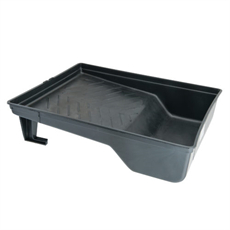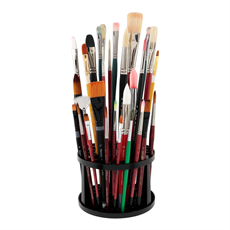A paintbrush is a simple yet essential tool for artists, and understanding its anatomy can help you choose the right brush for your project and maintain it properly. Here are the key parts of a typical paintbrush:
- Bristles (or Hair): The bristles are the most important part of the brush and come in contact with the paint and canvas or paper. They can be made from natural hair (such as sable, hog, or squirrel) or synthetic materials. Bristles vary in shape, length, and stiffness depending on the type of brush and its intended use.
- Ferrule: The ferrule is the metal part that connects the bristles to the handle. It holds the bristles in place and provides stability. It’s usually made of nickel-plated or brass.
- Heel: The heel is the part of the bristles closest to the ferrule. It’s the area where the bristles are firmly secured into the ferrule.
- Belly: The belly is the thickest part of the bristles, located between the heel and the tip. It holds and releases the paint when you apply pressure to the brush.
- Tip (or Toe): The tip is the fine, pointed end of the bristles. It’s responsible for creating precise lines and details in your artwork.
- Handle: The handle is the part of the brush you hold while painting. It can be made of various materials, such as wood or plastic. The handle’s length, shape, and texture can affect the artist’s grip and comfort during use.
- Crimp: The crimp is a metal or plastic ring located at the base of the bristles, just above the ferrule. It secures the bristles in place and helps maintain their shape.
- Ferrule Collar: Some brushes have a collar between the ferrule and the handle, which provides extra support to the brush and prevents water or paint from seeping into the handle.
- Ferrule Joint: The ferrule joint is the point where the ferrule attaches to the handle. It’s important that this connection is secure to prevent the bristles from coming loose during use.
- Ferrule Seam: The seam is the line where the two ends of the ferrule are joined. It should be smooth and well-made to ensure the bristles remain in place.
- **Crimping: ** Some brushes, especially watercolor brushes, have crimped bristles. Crimping involves crinkling the hair near the ferrule to create more surface area for holding and releasing water and paint.
Understanding the parts of a paintbrush can help you choose the right brush for your specific painting needs and maintain your brushes for optimal performance. Different brushes are designed for various techniques and media, so selecting the appropriate brush for your project is crucial to achieving the desired results. Proper care, including cleaning and reshaping your brushes, will also prolong their lifespan and ensure they remain in good condition.














